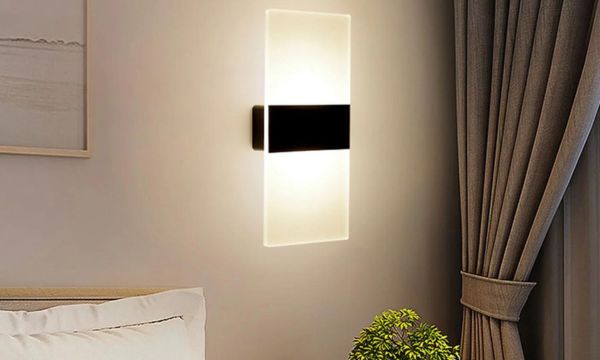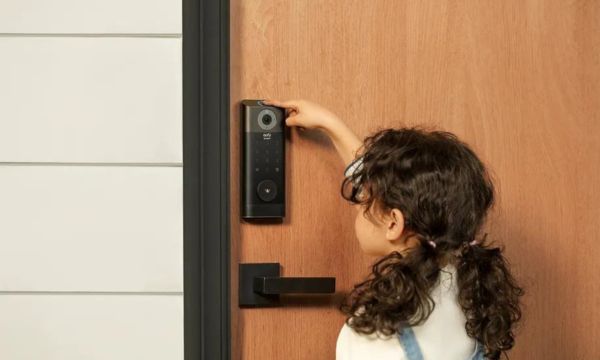Illuminate Your Space: Motion Sensor Lights
Motion sensor lights are one of the most useful and creative forms of modern lighting. They can quickly and easily change the look of a room.
People love these smart lighting systems because they make places safer, consume less energy and provide a smooth lighting experience.
Motion sensor lights have now become an important part of lighting design in homes and businesses. They make places more responsive and dynamic.
1. Understanding Motion Sensor Lights
Motion sensor lights have sensors that detect motion within a certain range. These sensors use various technologies such as infrared, microwaves and sound waves to record changes in the environment.
When movement is detected, the lights turn on automatically, making the room brighter. After a certain time the light goes out.
2. Improve Security
One of the biggest benefits of motion sensor lights is that they make things safer. These lights can prevent burglaries whether they are installed outside a home, along the road or in a business.
Lights that suddenly illuminate when motion is detected can deter attackers and draw attention to their location. This extra layer of protection makes the place safer and gives people peace of mind.
3. Reduce Consumption, Save Money and Energy
In terms of energy saving, motion monitor lights are the best. Motion sensor lights only turn on when necessary, unlike regular lights that stay on all the time.
This targeted lighting uses much less energy, which means a lower electricity bill and a smaller impact on the environment.
This is especially useful when used outdoors, as the lights can remain off until motion activates them.
4. Automated and Easy to Use
Motion sensor lights can be automated, making everyday life easier. Imagine walking into a room and the lights automatically turn on. You don’t have to look for the light switch in the dark.
In outdoor areas such as driveways or entrances, these lights will make the space bright and inviting as soon as movement is detected. Smooth technology makes it more accessible and comfortable for users.
5. Various Applications
There are many places where you can use motion sensor lighting. In residential environments they are often used for security lighting, outdoor lighting and garage lighting.
These lights are used for commercial purposes in warehouses, offices, parking lots and the exterior of buildings. Because they are flexible, they can live in a variety of environments, making them useful in many situations.
6. Choose the Best Motion Sensor Light
When choosing the right motion sensor lamp, you should consider factors such as sensor type, detection range, sensitivity and type of light source.
Because infrared sensors are sensitive to heat, they are excellent for detecting moving people, while microwave sensors can detect movement through walls.
Understanding these differences can help ensure that the light you choose meets the needs of the room.
7. Installation and Maintenance
Motion sensor lights are generally easy to install, but must be placed in the correct location to work properly. It is important that the sensor is clearly visible and installed at the correct height.
Regular maintenance, such as cleaning sensors and checking for blockages, can keep your system running smoothly for a long time.
8. Dealing With Problems
There are many benefits to motion sensor lights, but there are also some problems. Factors such as animals, plants or the environment can cause false triggers.
These issues can be resolved by changing the sensitivity settings and paying attention to where the software is placed.
Choosing a light with a programmable timer also allows users to change how long the light stays on after motion is detected.
9. New Ideas for the Future
As technology continues to develop, motion sensor lights will likely improve. Some areas showing potential are connecting to smart home systems to make sensors more accurate and reduce energy consumption.
In the future, motion sensor lights may become even more important for smart and environmentally friendly building design.

Illuminate-Your-Space-Motion-Sensor-Lights (Source – Google)
Conclusion
Motion sensor lights represent a significant advancement in modern lighting design, offering a blend of convenience, security, and energy efficiency.
Their ability to automatically respond to movement makes them not only practical but also highly adaptable for both residential and commercial settings.
By reducing energy consumption and enhancing security, they provide a cost-effective and eco-friendly lighting solution.
As technology continues to evolve, the future holds exciting possibilities for motion sensor lights, particularly in their integration with smart home systems and further innovations in energy-saving capabilities.
Whether for safety, savings, or convenience, motion sensor lights are poised to remain a key component in smart and sustainable building designs for years to come.
FAQs
1. How do you explain motion sensor lighting?
Motion sensor lights are devices with built-in sensors that can tell when someone moves nearby.
When movement is detected, these lights automatically turn on and remain on for a specified period of time.
2. How can lights with motion sensors make it safer?
Potential thieves are deterred by motion sensor lights. When movement is detected, the lights flash quickly to draw attention to the area.
This makes it unattractive to people who shouldn’t be there and is generally safer.
3. Do motion sensor lights use less power?
Yes, lights with motion sensors use less energy. Compared to regular lights that are always on, these lights only turn on when motion is detected.
This significantly reduces energy consumption and costs.
4. Where do lights with motion sensors come in handy?
Motion sensor lights can be used in many places, from homes (outdoor, garage and security lighting) to businesses (offices, warehouses and parking lots).
They can adapt to different environments because they are flexible.
5. How do you choose the best light with motion sensor?
Consider factors such as sensor type, detection range, sensitivity and light source. Infrared sensors absorb heat and microwave sensors can penetrate walls.
Understanding these differences can help you ensure your furniture fits the needs of your unique space.
6. Is it difficult to set up lights with motion sensors?
Installation is usually very simple, but ensuring it is installed in the correct location is critical for best performance.
Sensors must be able to see clearly and should be regularly cleaned and checked for obstructions to ensure they are working properly.
 Climate Control Revolution: Embracing the Future with Smart Thermostats
Climate Control Revolution: Embracing the Future with Smart Thermostats
As new technologies change every aspect of our lives, smart thermostats have become an important part of […]
More Enhancing Security with Smart Doorbell Cameras
Enhancing Security with Smart Doorbell Cameras
In an era of constant technological advancement, smart products are becoming more and more common in our […]
More Effortless Living: Smart Home Automation
Effortless Living: Smart Home Automation
The idea of a smart home was once just a dream from the distant future, but now […]
More